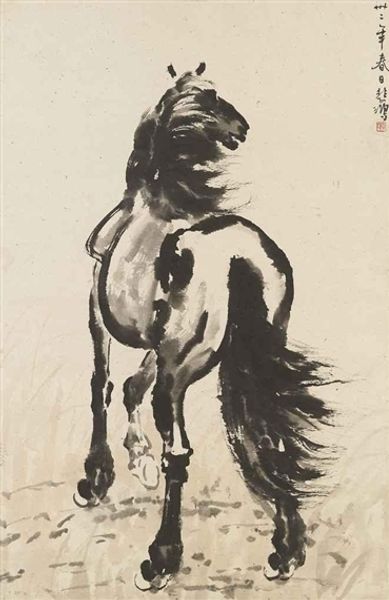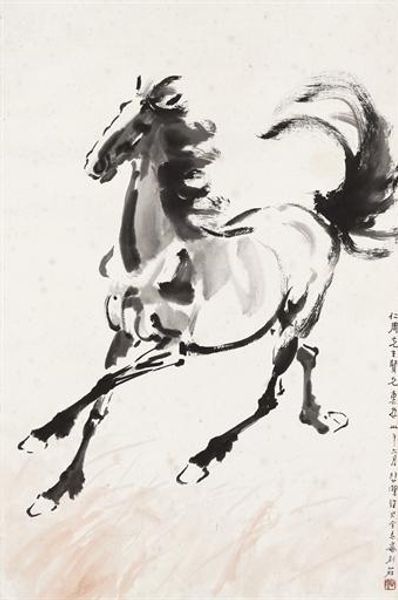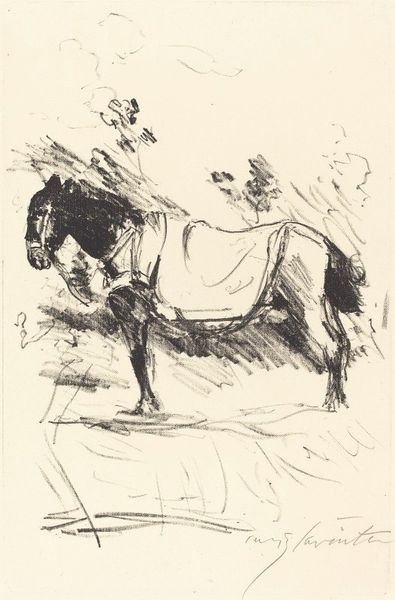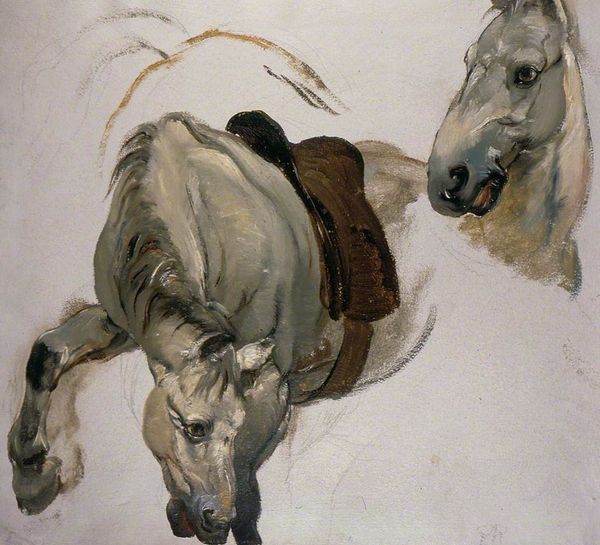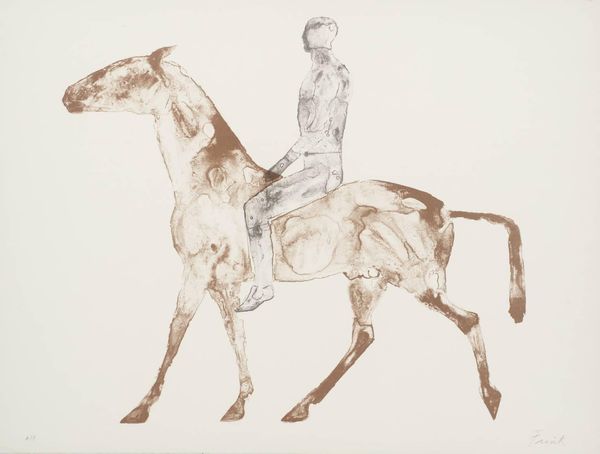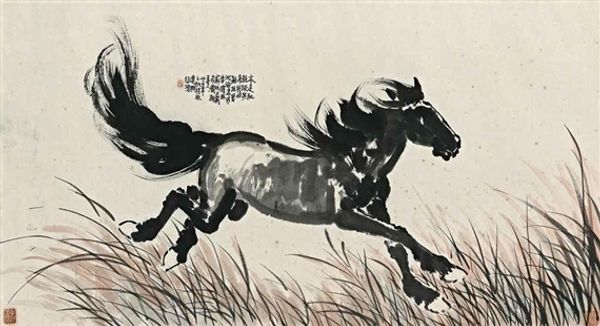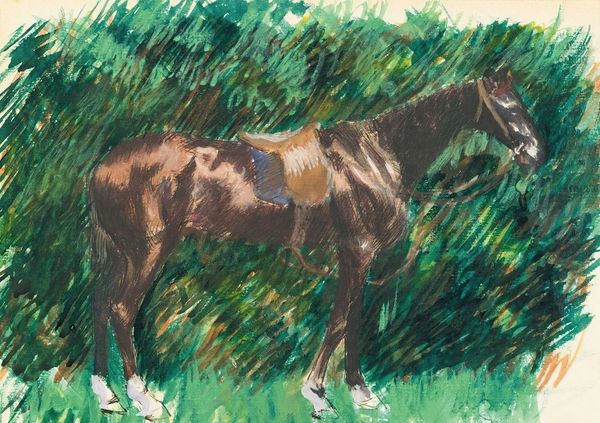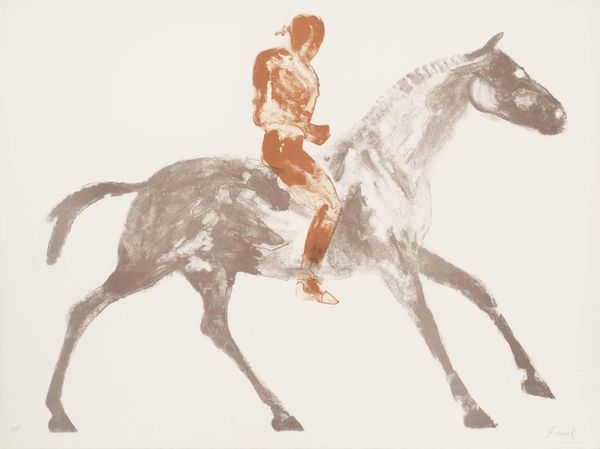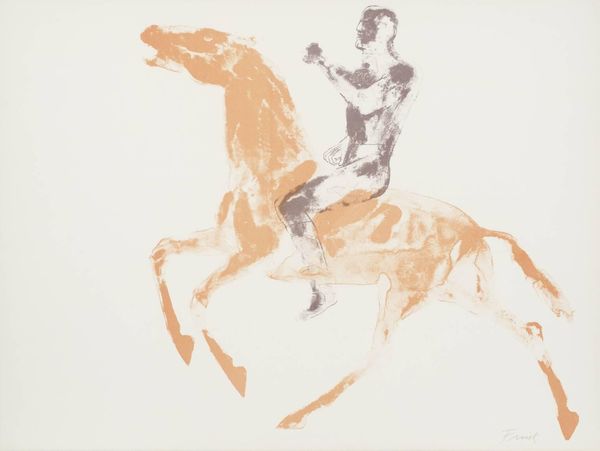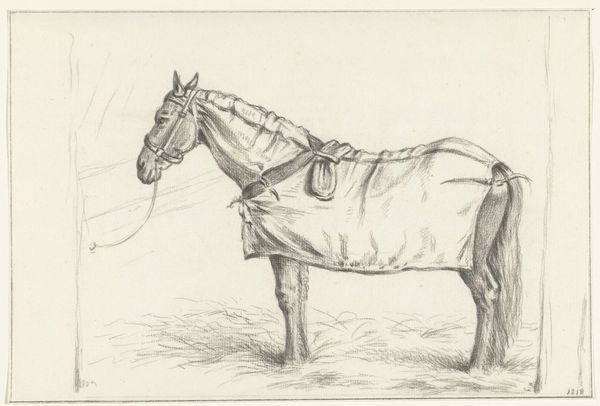
drawing, painting, paper, ink
#
drawing
#
painting
#
asian-art
#
landscape
#
figuration
#
paper
#
oil painting
#
ink
#
horse
#
line
#
realism
Copyright: Public domain China
Curator: I am struck by the raw energy in this image, the horse practically leaping off the paper. Editor: Agreed. Let’s contextualize what we are seeing. This is Xu Beihong’s "Galloping Stallion" from 1937, an ink and color on paper piece that’s part of his iconic horse paintings. Curator: What is remarkable is the simplicity of the materials. Paper and ink, and yet such dynamism! I find myself wondering about the kinds of brushes he might have favored for a piece like this. Did he use different brushes for the body versus the mane? The contrast suggests distinct choices were being made regarding the mark-making. Editor: The horse became a potent symbol in Chinese art during this period. Xu Beihong, a prominent figure in modern Chinese art, often used the horse to represent the spirit of the Chinese nation – its strength and resilience, especially during a time of conflict and upheaval. Curator: I'm interested in how that ties into artistic production more broadly. It makes me think of how the demand for nationalistic imagery influenced workshops and the kinds of materials that were accessible at that time. Were there constraints on material access or pressures to produce particular patriotic symbols? Editor: Certainly. The rise of nationalism influenced patronage. Wealthy individuals and institutions who also championed Chinese strength supported the artist and these projects. It goes beyond just the availability of ink and paper, encompassing who was commissioning, collecting, and displaying these pieces. It influenced art criticism as well; critics were often invested in bolstering nationalist narratives. Curator: Exactly! The museum infrastructure itself—what got shown and lauded, what got excluded or overlooked—becomes part of the story. "Galloping Stallion," as we see it now, is more than a horse—it is a statement that existed inside that matrix. Editor: And through studying his work, the artist became forever entwined in the identity of a powerful movement that forever changed the means, motives, and meanings behind material culture.
Comments
No comments
Be the first to comment and join the conversation on the ultimate creative platform.
